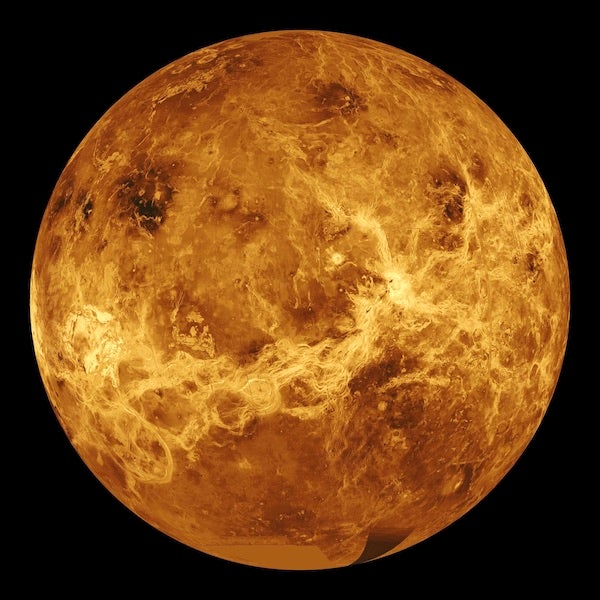A: Venus, with a mean surface temperature of about 863 degrees Fahrenheit (462 degrees Celsius), is the hottest planet in our solar system, even though Mercury is closer to the Sun. This is because a runaway greenhouse effect impacted the planet, causing the atmospheric pressure to reach around 92 times that of Earth’s surface. On Venus, lead melts like butter.
The location of a planet also impacts surface temperature because the amount of sunlight a planet receives is inversely proportional to the square of its distance from the Sun. In other words, the farther from the Sun a planet is located, the less radiation it receives.
At its orbital distance, Venus receives nearly twice as much energy from the Sun as does Earth. However, at Mercury’s distance, it would receive approximately 6.5 times as much energy, yielding mean surface temperatures approaching 1,340 F (727 C). That’s even hotter than the real Venus! Alternatively, if we were to swap Earth with Venus, the surface of our sister planet would be somewhat above 440 F (227 C) on average, akin to being inside a very hot oven.
Venus cools even more as it moves farther away from the Sun. At Mars’ location, which receives 43 percent less energy from the Sun than does Earth, Venus would have a mean surface temperature of around 44 F (7 C). That’s just a bit colder than Earth’s current mean temperature of 59 F (15 C). If Venus were to move to Jupiter’s orbit, the sunlight there would be less than 4 percent what Earth receives, and the planet’s surface temperatures would be closer to –82 F (–63 C). At those temperatures, any surface water could only be present as ice. (However, Venus likely lost any surface water it had in that ancient runaway greenhouse effect.) Beyond Jupiter’s orbit, temperatures on Venus would approach –280 F (–173 C) and likely even colder near the farthest edges of our solar system. Thus, even Venus can become chillingly cold if located far enough away from the Sun.










